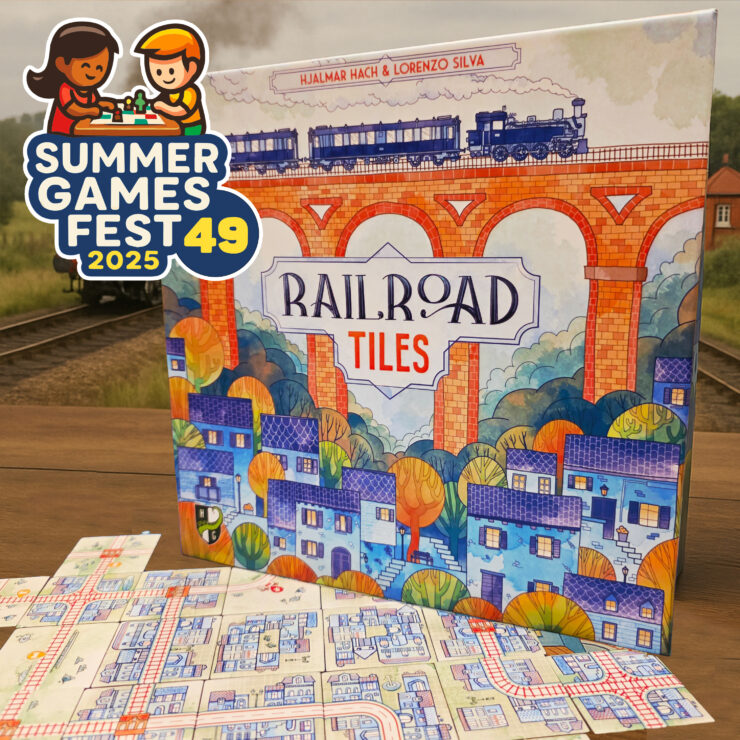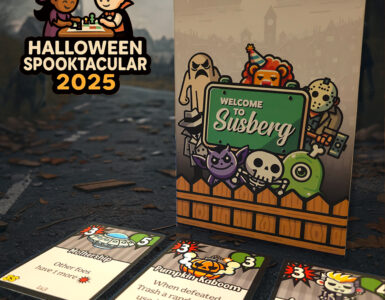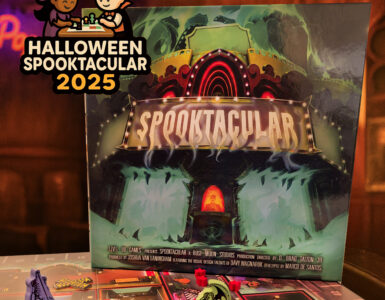THIS REVIEW IS ACTUALLY 2 REVIEWS, ONE FROM MYSELF AND ONE BELOW THAT FROM LITTLE BOARD GAME GROUP MEMBER RACHEL ALNER WHO GAVE A MUCH MORE FAVOURABLE REVIEW.
Review From Matthew Bailey
Railroad Tiles is a game I’d been looking forward to for a really long time. I backed it the instant it hit Kickstarter, since it was pitched as a physical, tile-laying version of the hugely popular Railroad Ink — a game I’m a massive fan of, have reviewed a couple of times here, and regularly recommend. I think it’s even popped up in our travel game list more than once.
We’ve had a few middling games over the last couple of days, and I was desperate for this one to be the title that broke the cycle. Unfortunately, I’ve got to say I came away a little underwhelmed by Railroad Tiles.
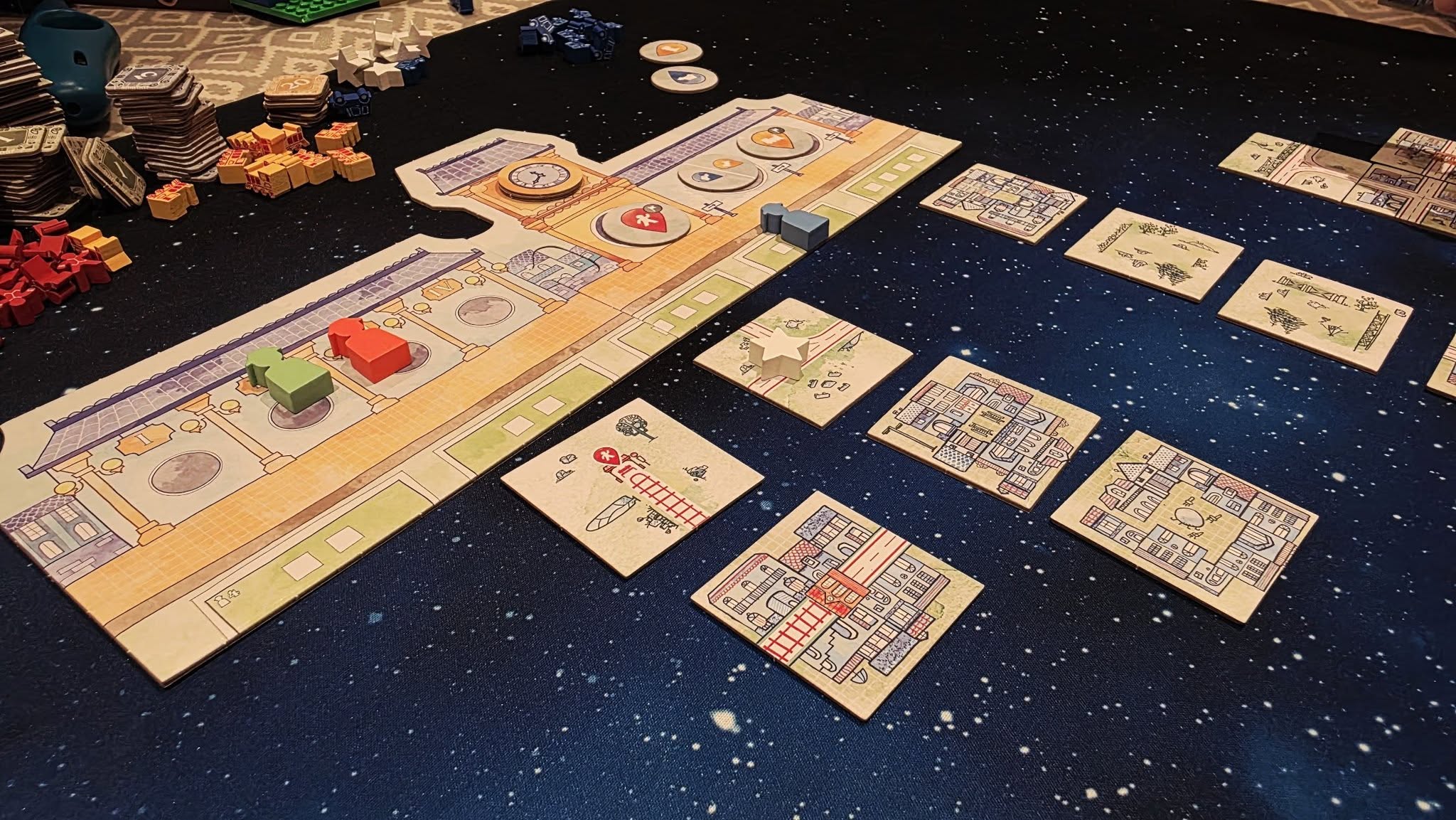
Now, there are quite a few expansions for the game, but as always, I tend to review the base game only. So this is very much thoughts on Railroad Tiles as it comes out of the box, no extras bolted on.
So how does it work? The game is played over eight rounds, and each round has four steps: setup, tile drafting, pawn placement, and end-of-round tidy-up. At the start of the round, new route tiles are revealed into columns on the central board, along with a placement token that tells you which type of pawn (cars, trains or travellers) can be placed that round.
When it’s your turn, you pick an entire column of tiles and immediately add them to your personal board. Tiles must connect properly — railways to railways, highways to highways, empty sides to empty sides — though you can rotate and flip tiles however you like to make them fit. You can’t just shove a railway into a road or leave a gap, so there’s a bit of puzzling each time you add new pieces. Occasionally, you’ll wish you could chuck a tile away, and the game even allows you to “reject” up to two tiles per game if they really don’t work for you.
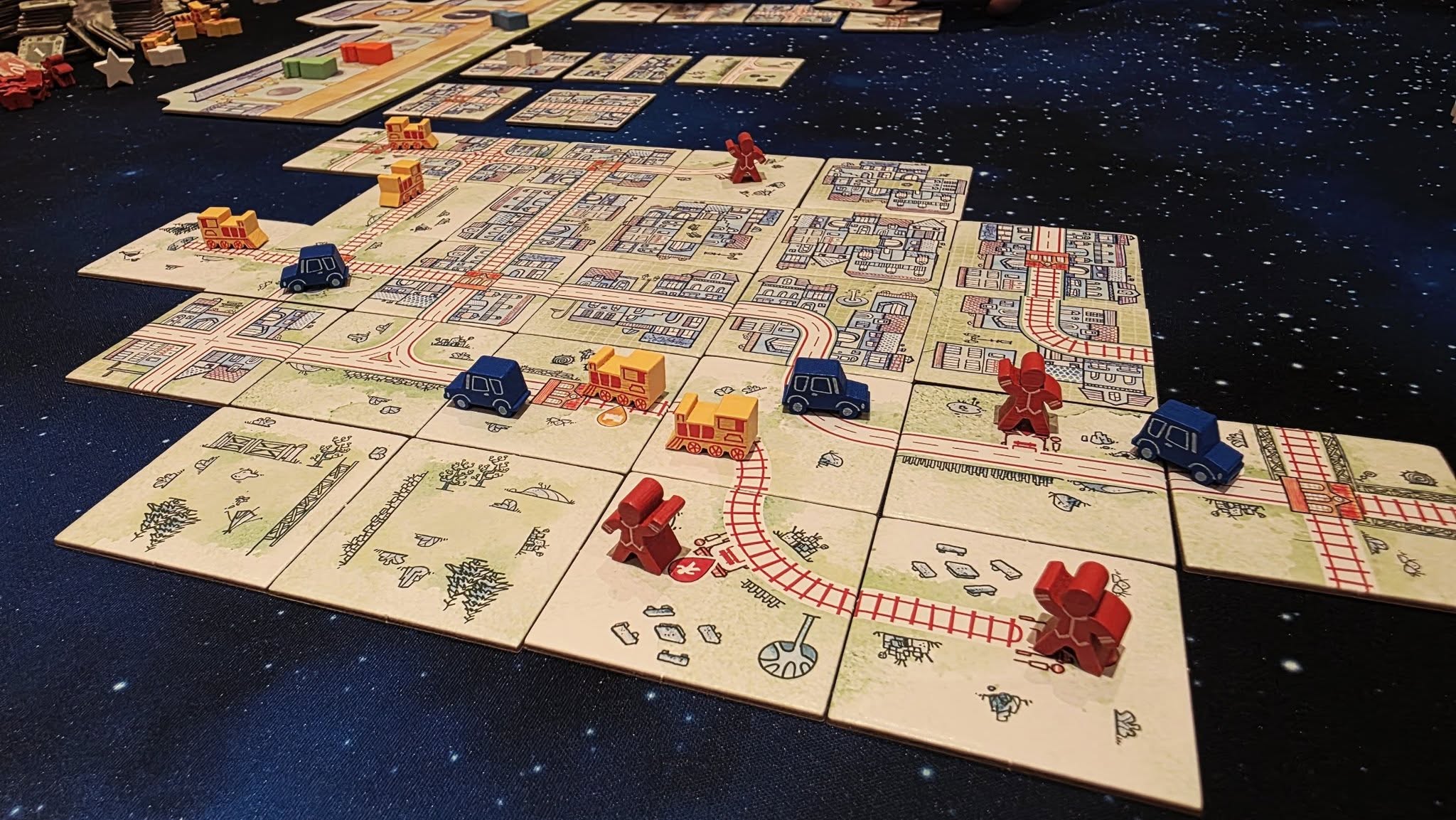
After laying tiles, you place pawns depending on the placement tokens in play. Cars score for being connected along roads, trains score for rail networks, and travellers can switch between both via stations, scoring points for being linked together. Each pawn gives you immediate points when placed, up to a maximum of five for each connection, so you’re constantly nudging your network into better scoring shapes.
At the end of the game, you add up extra points. You score for groups of town tiles (which form cities), for your largest rectangle of connected tiles, and you lose points for too many “openings” — dead ends in your network. Star pawns, which you pick up as bonuses during the game, can also be spent to bend the rules or banked for end-game points. It all feels a little like a hybrid between Railroad Ink and a classic city-building puzzle.
The problem for me is that, because I love Railroad Ink so much, this just didn’t give me the same satisfaction. The scoring system of connecting meeples felt fiddly and not nearly as intuitive as the clean, simple scoring in Railroad Ink. The whole time I was playing I just kept thinking: “I wish this was literally Railroad Ink but with physical tiles instead of pens and boards.” That’s not what this is, and I get why — the designers wanted it to stand on its own two feet, rather than just being a straight-up conversion. But for me, it never quite landed.
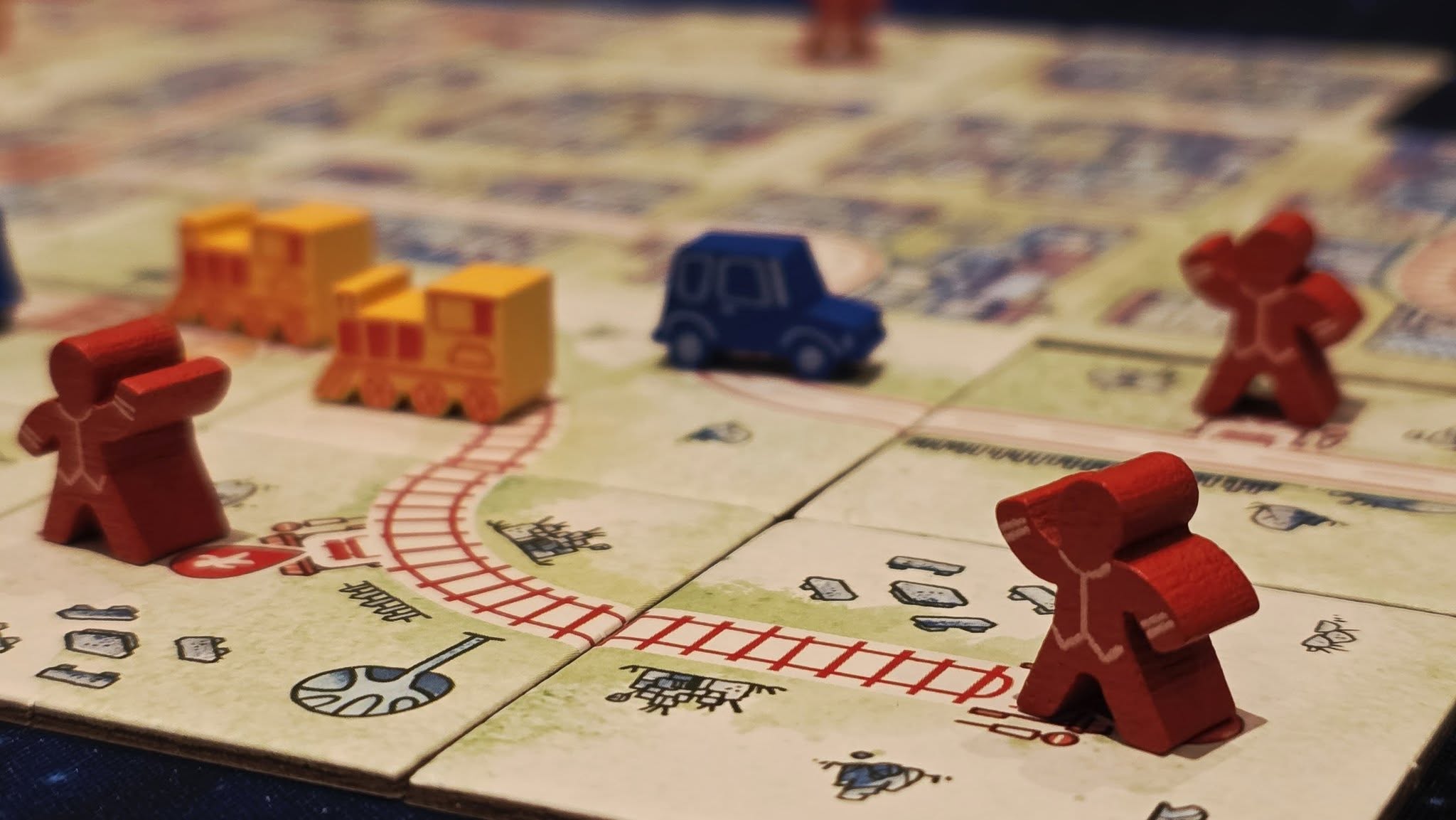
There is a great review from about a week ago which was much more favourable, and I’ll link to that below because it gives the other side of things. I think this is one of those games where expectations play a big part. I went in wanting Railroad Ink in physical form, and what I got was something adjacent but different.
The boys were a bit split too. Jack, who’s a huge Railroad Ink fan, agreed with me and preferred the original. Toby thought it was fine, and since he’s never been as big on Railroad Ink anyway, he actually responded to it more positively.
Components-wise it’s excellent. The tiles and boards look lovely, everything feels well-made, and presentation-wise it’s spot on. I do think there’s a solid game here, and I suspect with the expansions it could really open up into something special. But as it stands, if you’re only picking one, I’d still recommend Railroad Ink over this every time.

Review From Rachel Alner
I got railroad tiles as Kickstarter a few weeks ago. Whilst Ive never played Railroad Ink – despite really wanting to get it. My understanding is its a cross between railroad ink and carcassonne.
We have played it a few times now and we all really like it.
You set the game up by randomly choosing the order people go and having gotten the same number of railroad tiles from the bag as start pieces the person who will go last chooses their start piece first.
At the start of the turn you draw the number of tiles as per the column. You also turn over a clock face. You then go in order left to right to choose which column you want to take and put your meeple on that column. You can discard up to 2 tiles in the game and all others must be played next to a similar tile… I.e roads connecting roads, railways connecting railways, cities connecting cities etc.
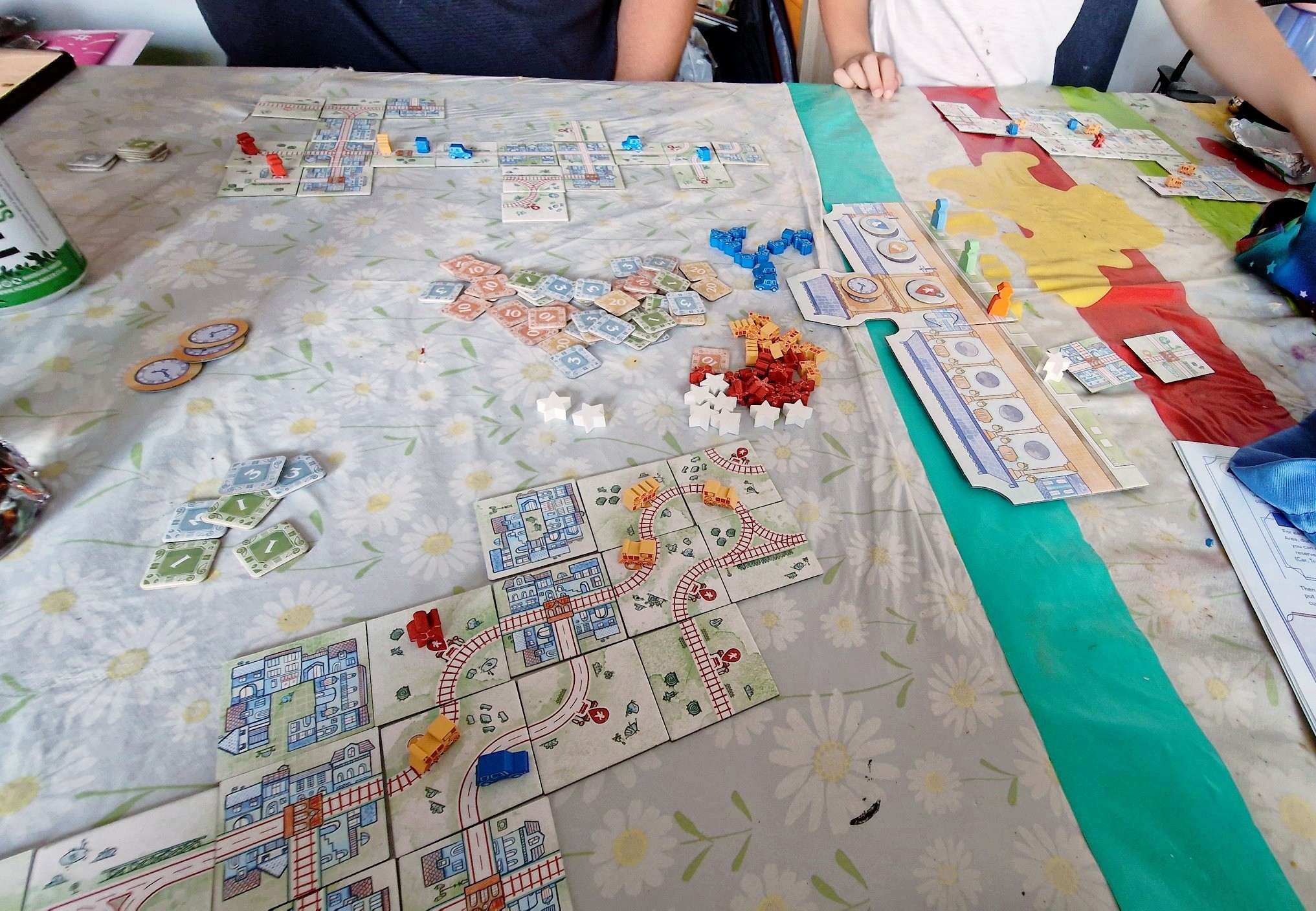
One all players have played you then get to place a playing piece from each of the active tiles space. These are either yellow trains which much be placed on yellow marker places, blue cars which must be placed on blue marker places or red passengers on red marker places. These are scored straight away to give victory points – 1 for the piece you placed plus 1 for each of the same type it connects too (up to a max score of 5). Trains can only connect on a train line, cars on roads but passengers can connect through stations across train lines and roads.
You then put a white star on the column which didn’t get chosen that round (these can be used to trade the pieces you get in the previous stage to ones you want). You turn over a clock face and move all others right into the active play section and discard them once they come off the board. You also reset the tiles and move the playing meeples back to the waiting area in the order left to right of the columns that they took last time. This defines the order for the next round.
You play rounds until the last clockface is moved into the active spaces and the explanation mark is shown on the clockface – this is your final round.
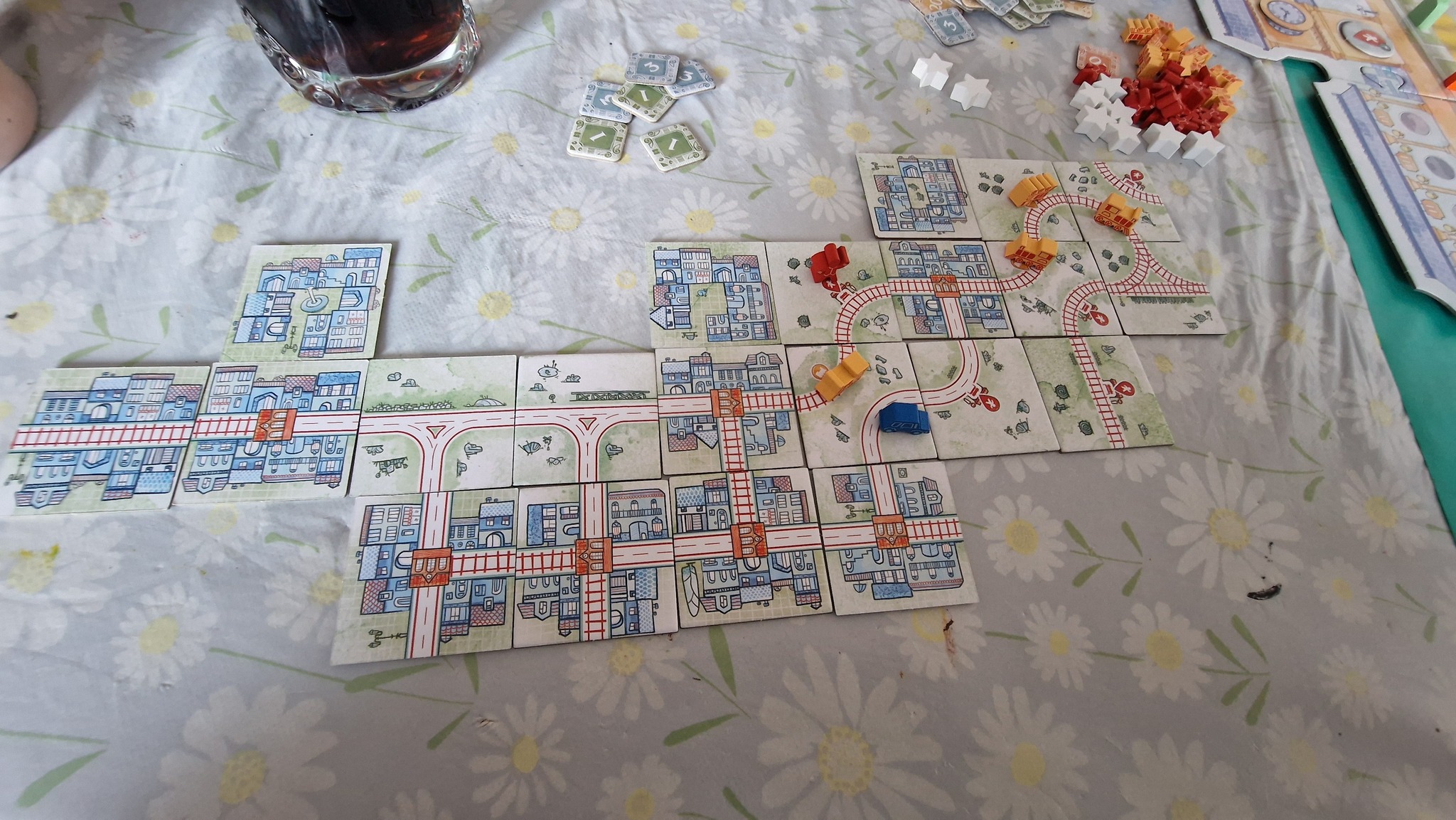
Once you finish this round you collect victory points for 2 additional things.
1. Collect 5 victory points for each block of 3 cities you created.
2. Collect 1 victory point for each tile in the largest complete rectangle on your game tiles.
Once you have done this you add up the open ends you have on your tiles… you are allowed 5 and then loose 1 point for any ends you have more than the 5.
Then you add up your victory points and the highest score wins. There are also some “objective” tiles but we haven’t played with those yet. There are also expansions (we have 2 of those too but haven’t played them yet).
The game is really good and quite quick (around 15-20 min game time). There is lots of strategy around which column will give you the best score. Personally I feel the tiles could be a little thicker – they arnt a thin cardboard which is good but they are not as thick as carcasonne and I do wonder if they will stans the test if played alot – but we will see how they stand up.
The wooden pieces are really good and I really like them – they definitely add something to the game.
Overall I feel this is a really good game and I highly recommend it – especially if you like carcasonne but are looking for something different. Its certainly made me want to get railroad ink even more.



